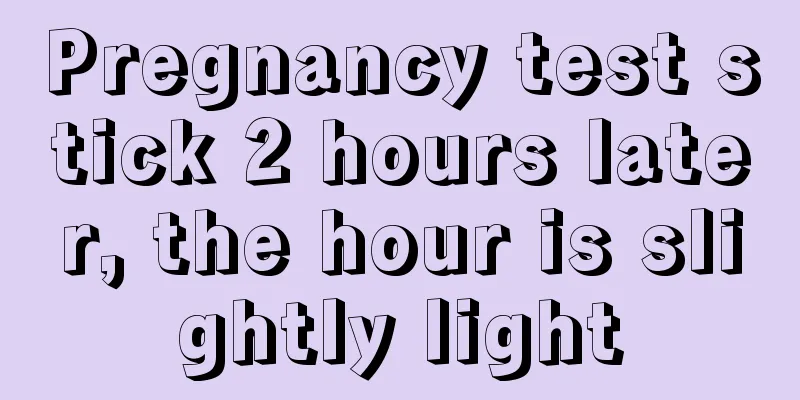Subtle insights from the window of childhood: revealing the secrets of atrial septal defect

|
Author: Zhang Xin, Chief Physician, Beijing Children's Hospital, Capital Medical University Reviewer: Wang Fangyun, Chief Physician, Beijing Children's Hospital, Capital Medical University Atrial septal defect (ASD) is like a "window" that is not completely closed, quietly affecting the heart health of children. It is not only a common type of congenital heart disease, but also the focus of attention and worry for many families. Now, let us unveil the mystery of atrial septal defect and understand its nature, symptoms, treatment and the difference from patent foramen ovale. Figure 1 Copyright image, no permission to reprint 1. What is atrial septal defect? The heart, as the engine of the human body, has a sophisticated and complex internal structure. A normal heart is divided into two atria, the left and right atria, by the atrial septum. When the atrial septum is not fully developed or the foramen ovale is not closed, causing the left and right atria to communicate, the blood in the left atrium enters the right atrium through the defect, which is an atrial septal defect. Atrial septal defects are relatively common, accounting for 10% to 15% of congenital heart diseases. Atrial septal defects can exist alone or in combination with other heart malformations. Although this abnormality sounds worrying, with the advancement of medical technology, its diagnosis and treatment methods have become increasingly mature. 2. What are the symptoms of atrial septal defect? The symptoms of atrial septal defect vary depending on the size of the defect. For many children, the defect may not be large, so there are no obvious symptoms in the early stages. It is often discovered accidentally during a physical examination with a heart murmur or an echocardiogram. Infants and young children with larger defects may have symptoms of heart failure, such as anorexia, rapid breathing, slow growth, and frequent colds. Older children may have symptoms such as palpitations, chest tightness, and decreased physical strength. Severe cases may experience difficulty breathing and cyanosis. Figure 2 Copyright image, no permission to reprint 3. How to treat atrial septal defect? If an atrial septal defect is found, the patient should go to a cardiologist clinic for treatment, complete relevant examinations, and be evaluated. Small atrial septal defects (defect diameter <5 mm) can be followed up and observed, and most will close spontaneously in infancy. The probability of medium or large atrial septal defects closing spontaneously is low, and individualized treatment should be performed based on the results of cardiac function assessment and complications. If the heart function is normal and there are no symptoms, elective surgery can be performed; if heart failure or pulmonary hypertension occurs, a comprehensive assessment should be performed and the appropriate time should be chosen for surgery. At present, surgical treatments for atrial septal defects include surgical repair, percutaneous minimally invasive interventional closure, and hybrid surgery that combines the two. The choice of surgical method depends on the age and weight of the child, as well as the size and location of the defect. 4. What is the difference between patent foramen ovale and atrial septal defect? When discussing atrial septal defects, it is important to mention the difference between them and patent foramen ovale. Although both involve potential shunts between the left and right atria, there are significant differences in their nature. Patent foramen ovale is a physiological or temporary condition caused by the opening of the ovale valve and does not involve the absence of atrial septal tissue. As the baby grows and develops, the foramen ovale usually gradually closes. Atrial septal defects, on the other hand, are a clear structural abnormality that requires medical intervention to correct. In summary, as a common type of congenital heart disease, the recognition, diagnosis and treatment of atrial septal defect require the joint efforts of parents and doctors. Through scientific monitoring, timely intervention and individualized treatment plans, we hope to protect this "window of childlike innocence" for children and let their hearts beat healthily on the road to growth. |
<<: 5 tips to say goodbye to back pain from sitting for a long time!
>>: Is the cerebellum also playing "thrilling drift"? ——Unveiling the secrets of Chiari malformation
Recommend
Funny Medicine Talk | Rifampicin (with audio)
Your browser does not support the audio tag...
Will the stem cells injected into a bone marrow transplant attack one's own tissues? Is there a way to prevent this?
Author: Huang Xiaojun, Chief Physician, Peking Un...
The harm of girls not changing their underwear
Personal hygiene has always been an issue that pa...
What are the methods to relieve rhinitis and nasal congestion in pregnant women?
It is particularly troublesome for women to feel ...
How is warm nest syndrome treated?
Ovarian syndrome is still a relatively common gyn...
Symptoms of irregular endometrial shedding
In recent years, more and more people have begun ...
What is the brown discharge after abortion?
There are many people who have a light brown disc...
How to treat hair loss in girls?
Everyone actually experiences hair loss, it’s jus...
Treatment of gynecological inflammation cervicitis
I believe everyone is familiar with diseases such...
How to relieve menstrual stomach pain?
In daily life, many women suffer from abdominal p...
What is the reason for high white blood cell count in pregnant women's urine routine
Women who have been pregnant know that pregnant w...
How to deal with leftover crabs?
We all know that crabs can be cooked in many ways...
How long does it take to get your period after an abortion?
Abortion is a painless surgery that almost every ...



![[Popular Science Health Exercises] Massage experts teach you 8 exercises to nourish the lungs, replenish qi and strengthen the body. Practice them now](/upload/images/67f1eb7e6f7b4.webp)





